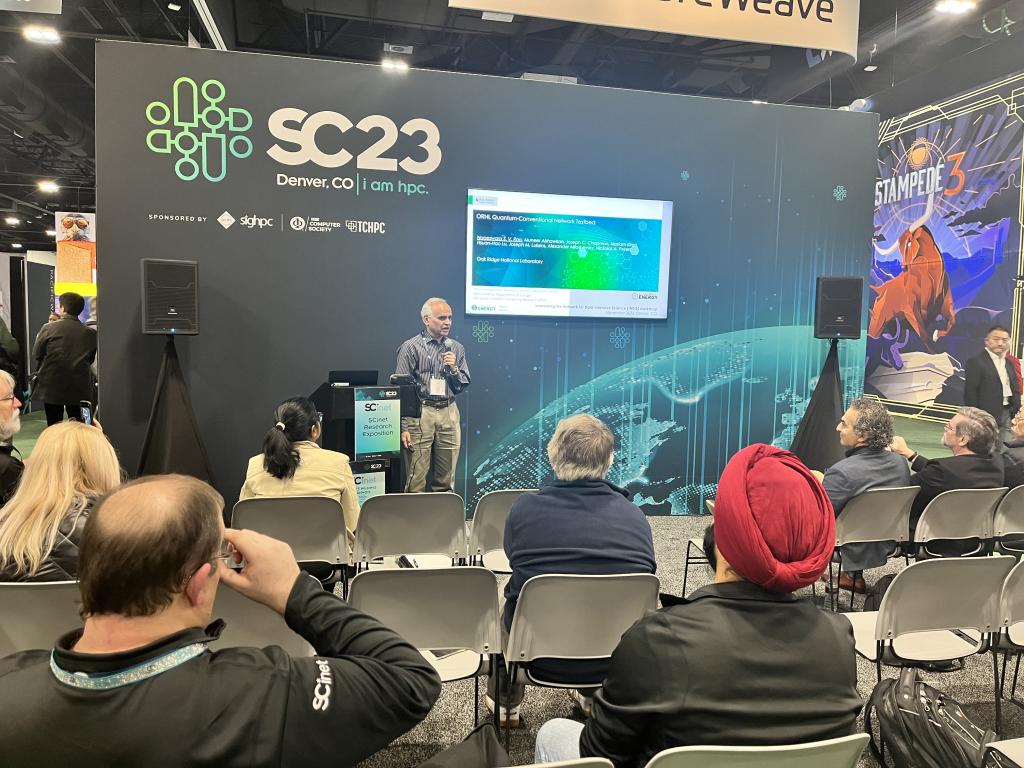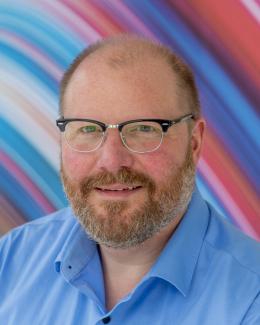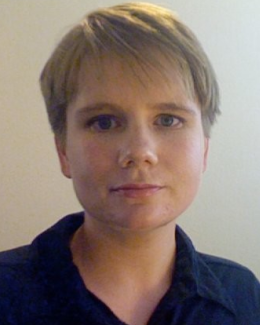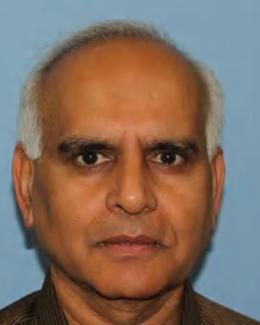
The Department of Energy’s Oak Ridge National Laboratory hosted its Quantum on the Quad event to promote its Quantum Roadmap, a document that outlines how best to align the lab’s world-class quantum facilities and expertise to accomplish DOE’s mission.
The roadmap represents a strategy to leverage the lab’s 20-plus years of quantum R&D, more than 30 full-time quantum staff and its Quantum Science Center to fully realize the potential of quantum information science, or QIS.
From supercomputers more efficient (and potentially more powerful) than today’s leading systems, to sensors capable of detecting the ever-elusive dark matter, to more secure energy grids, the future of innovation may well depend on how well humanity can manipulate the properties of quantum mechanics.
ORNL’s successes in QIS and its forward-looking strategy were recognized with three funding awards that will help ensure the laboratory remains a leader in advancing quantum computers and networks.
One of these new research efforts is a collaboration between ORNL and the University of Massachusetts-Amherst, the University of Arizona, the University of Texas at Austin and Arizona State University to develop the architecture and protocols for a performance-integrated scalable quantum internet. A scalable quantum internet could increase the capacity and security of existing networks and allow for more rapid processing of large amounts of conventional and quantum data — a growing obstacle to scientific R&D.
The work builds on multiple efforts funded by DOE’s Advanced Scientific Computing Research, or ASCR, program as well as ORNL’s recent internal investment in the longest (more than 300 kilometers) deployed “dark fiber” testbed for quantum networking in the national lab complex. The testbed supports 400-gigabit conventional data transfer speeds and dedicated channels within the lab’s network.
The project, known as the Performance Integrated Quantum Scalable Internet, or PiQSci, will receive $6 million over three years. “This project team provides the multidisciplinary expertise in theory and experiment needed to design and build the quantum networks enabled by our testbed with powerful quantum-conventional capabilities,” said project lead and ORNL Corporate Fellow Nageswara Rao.
Another recent award seeks to apply ORNL’s expertise in both QIS and the power grid to eventually establish one or more power grid testing facilities with quantum capabilities. A quantum-based grid could be more secure and more capable of routing power based on demand.
The Grid Research, Integration and Deployment for Quantum, or GRID-Q, project will help researchers identify and better understand specific use cases for quantum computing, communication and sensing on the power grid. Additionally, there will be facility design and roadmapping efforts aimed at quantum technologies for power grid applications. These activities will accelerate the transfer of quantum technologies for commercial use to support a more resilient, reliable and secure power infrastructure.
GRID-Q will receive $3.75 million over three years from DOE’s Office of Electricity, Office of Fossil Energy and Carbon Management and Office of Cybersecurity, Energy Security and Emergency Response. The project includes four other national labs (Argonne, Los Alamos, Lawrence Livermore and the National Energy Technology Laboratory), three academic institutions (University of Denver, University of Southern California, and University of Pittsburgh) and two industry partners (Resilient Entanglement and IonQ).
“We believe that quantum technologies can help make the power grid more efficient and secure, and the GRID-Q project seeks to help move those technologies from the laboratory to the real world,” said co-project lead and ORNL distinguished research scientist Warren Grice.
Suman Debnath, also co-project lead and an ORNL researcher, added, “This is an extremely interesting project for the power grid experts to understand the potential impact of quantum technologies and identify means and methods to ease the integration of these technologies in the power grid.”
Another ASCR-supported effort, the Assessment of Quantum Utility EvaluateD Under Current Technologies, or AQUEDUCT, project, will develop benchmarks and models to determine if and when quantum computers can execute useful computation.
Although quantum computers show great promise in advancing computational science, significant obstacles remain before they can be applied to many of today’s most complex scientific problems. AQUEDUCT provides the quantum computing and scientific computing communities with flexible, extensible models and methods that can be applied to near-term applications and adapted to future platforms and capabilities.
AQUEDUCT will receive $1 million over four years. Partners include the University of Tennessee, Knoxville; MITRE, Virginia Tech and the University of Southern California.
“The AQUEDUCT project addresses two rapidly developing areas of quantum computing: characterizing hardware noise at the component level and connecting the impact of this noise to application-level performance,” said project lead and ORNL staff member Kathleen Hamilton. “By bridging these twin research efforts, AQUEDUCT aims to develop predictive metrics for assessing the utility of quantum computers for today’s and tomorrow’s computational science challenges.”
UT-Battelle manages ORNL for DOE’s Office of Science, the single largest supporter of basic research in the physical sciences in the United States. The Office of Science is working to address some of the most pressing challenges of our time. For more information, please visit https://energy.gov/science.





